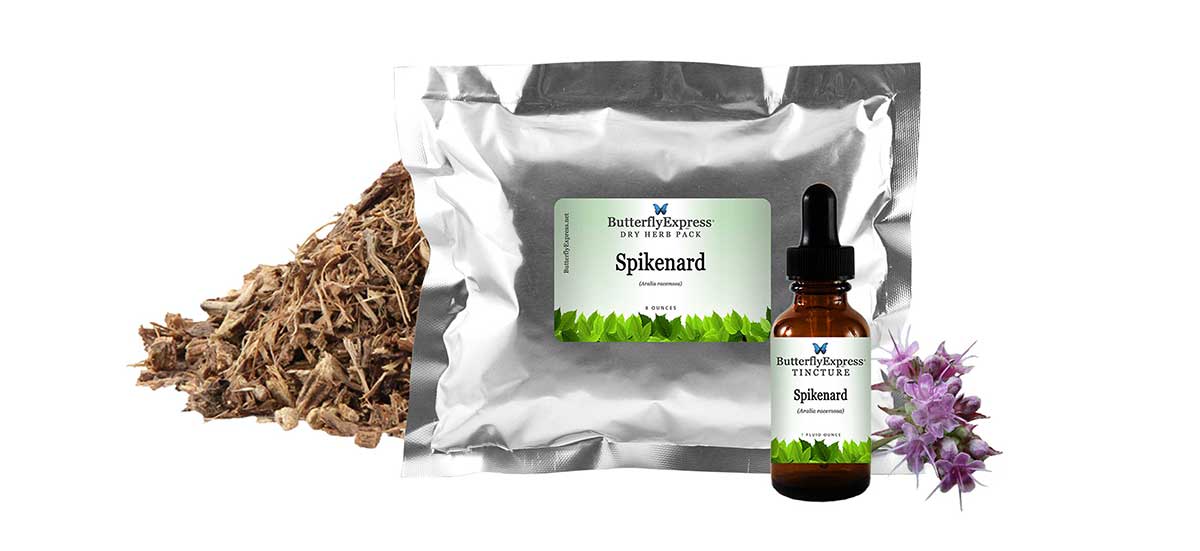|
Spikenard Aralia racemosa PART USED: Root PROPERTIES: Carminative, Stimulant, Nervine, Alterative, Sudorific, Vulnerary, Analgesic, Antispasmodic, Expectorant, Demulcent, Rubefacient SYSTEMS AFFECTED: Digestive, Nervous, Urinary, Respiratory, Cardiovascular (depressant), Circulatory, Integumentary POSSIBLE USES: fevers, asthma, coughs, back pain, irregular heart beat INGREDIENT IN: NV Spikenard was included in the US National Formulary as an agent with medicinal properties from 1916 through 1965. Native Americans and early settlers used a tea of Spikenard, either to drink or as a compress, to relieve back pain. It was also used for flatulence, coughs, asthma, and breast pain, and was considered to be a cure for blood poisoning. You might have noted that Spikenard is listed both as a stimulant and as a cardiovascular system depressant. This is exactly right. If the heart muscle is overexcited, or the electrical signals are misfiring, Spikenard (and its cousin Valerian) will calm and reset the pace. In other circumstances, these two herbs gently stimulate and strengthen while, at the same time, calming irregularities in the pulse and heart rate. Spikenard has been used for generations to relax a very nervous mother as labor begins. In Russia, the roots of a similar species are used as a general tonic and stimulant, especially for physical and mental exhaustion. Spikenard should be avoided during pregnancy—wonderful for labor but contraindicated before that. ©Copyright Butterfly Expressions 2020, 2024 |

Purchase Spikenard Products Here |

- Butterfly Expressions LLC
- Empowering Yourself
- OFFICIAL SITE